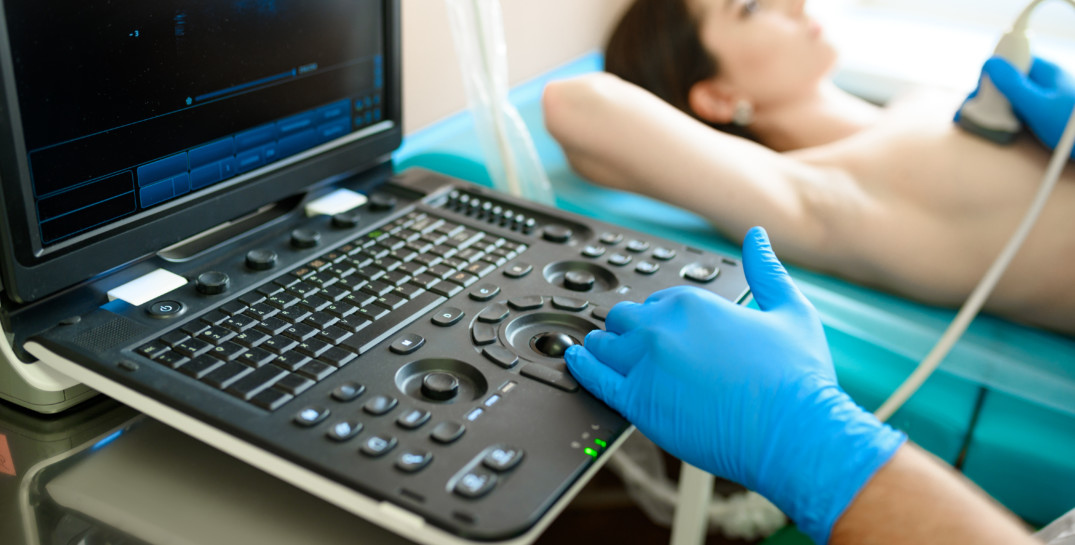Breast cancer screening Part I

How often should you screen for breast cancer? What does the screening look like? What is mammography and is it the only option?
In this post, we will answer these questions for you.
As you may have read in our previous post about breast cancer, this tumor happens in every 1 of 8 women in countries such as the US. When cancer is detected at an early stage, it is relatively easy to remove. Many expert bodies advise that every woman should get screened for breast cancer at some point.
You should be aware of the risk and – with the advice of your doctor – choose the best screening option for you.
WHEN TO CHECK FOR BREAST CANCER?
The goal is to “outsmart” the disease and find the cancer before any symptoms occur. According to the American Cancer Society, women can be divided into 2 groups: those who have an average risk of cancer and those who have an increased risk of the disease. Are you worried about which group you fit in? Read [this] post to find out the breast cancer risk factors.
- Women with an average risk of developing cancer aged 40 to 54 are advised to perform a mammogram (we will write more about this method below) once a year. Women aged 55 years and more can make their choice to continue with their schedule or to switch to one mammography every 2 years.
- Women with an increased risk of developing breast cancer should be under the care of a specialist. They may be required to check their breasts every year starting from the age of 30. There are 2 recommended methods: mammography and breast MRI, where MRI stands for magnetic resonance imaging. The guidelines are not clear on the topic of best screening method for women with dense and extremely dense breasts though. If you do have dense breasts, AILIS [here], a new breast cancer prediction technology, may help you.
Every woman should be tested regularly using the available diagnostic methods. Remember that self-breast exam is also one of the methods of monitoring the health of your breasts! A good knowledge of your body often allows you to detect signs of disease before consulting a physician.
MAMMOGRAPHY SCREENING FOR BREAST CANCER
Mammography is the most popular and well-researched method. Some estimate that it can detect cancer up to two years earlier than a manual examination.
It uses low-energy X-rays to “see through” the breast tissue. Have you ever sprained your ankle and got an X-ray? The resulting image is fairly similar, all black and white. The more dense the breast, the whiter the picture. Unfortunately, cancer may appear white on the mammogram as well. This is why – for women with dense breast tissue – this method might be less sensitive.
LIMITATIONS OF MAMMOGRAPHY
-
Breast compression
While it is a cost-friendly and easily accessible method, the mammography procedure itself is quite uncomfortable. Each breast gets squeezed between two plates to make a picture at least twice. The whole examination lasts about 20 minutes and you will need to wait for the results for a few days or weeks. -
Radiation
Certainly it would be a mistake to say that mammography is harmful. However, as with every procedure which utilizes ionizing radiation such as x-rays, the procedure itself might add a – very small – increase to the lifetime risk of cancer.
-
Waiting time
Mammography is an imaging method that requires the assistance of an experienced radiologist to read the results. If the patient has fatty breast tissue, the result analysis is usually simple and reliable, and breast cancer is easily visualized. If a woman has dense, glandular breasts, it is difficult to interpret the mammogram. The doctor may have trouble distinguishing between healthy and diseased tissue. Due to the nature of the examination and the need for specialists, the waiting time for the result may be extended even to several weeks.
-
Effectiveness of mammography
Mammography has limited effectiveness among women with dense breast tissue, which is very common. Almost 40% of women in the world have glandular, dense breasts. In their case, the density makes it difficult to distinguish between healthy and diseased tissue on a mammogram. The effectiveness of mammographic examinations among such women drops to 30%. In America, some states require that patients be briefed on the difference in result accuracy for patients with denser breasts.
Mammography is not the only screening method for breast cancer. Read more about other breast cancer screening tools and early detection of breast cancer.


